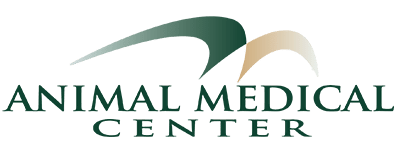Written by Christi Layten CVT, Dental Technician
Resourcing Vickie Byard CVT,VTS (Dentistry), CVJ and PetED Veterinary Education and Training Resources
Oral Health
Why is oral health so important? The same health problems we have affect our pets as well. Our furry companions experience plaque and tartar buildup, gingivitis (gum inflammation), periodontitis (pockets), tooth fracture, endodontic disease (root canal) and problems associated with crowding and tooth rotation. As with people, when any of these problems are left untreated, they can lead to halitosis (bad breath), tooth mobility, tooth root abscesses, pain and tooth loss. All of which can lead to weight loss and infection in other parts of the body. At Animal Medical Center we can help you both prevent and treat these issues for your pet.
Tooth Brushing
Why do we need to brush anyways? Well, bacteria starts accumulating within hours of eating. If not brushed away through regular tooth brushing, the “trash” starts to accumulate. It’s like having a HUGE party in your pet’s mouth and never cleaning up. “Trash” starts to accumulate and cause gingivitis which then accumulates more “trash” (plaque) which turns into dental calculus which leads to infection, tooth mobility, abscesses and bone loss. Eventually, the tooth will fall out and the pollution doesn’t stop there. It seeps into your pet’s system via the bloodstream and then starts to affect the liver, heart, and kidneys.
Our dentist recommends that we brush, floss and have regular dental visits. The Animal Medical Center dental staff recommends the same for your pet. Brushing, home care, and regular dental cleaning will ensure the best quality of life your pet.
Toothbrush Training
Now, don’t assume that your pet is going to allow you to just start brushing their teeth. Most need the training to have a good experience and for the brushing to be effective. Have you ever heard of the Law of Cause and Effect? It states that any behavior that has a positive consequence is usually repeated BUT a behavior with a negative consequence is usually discontinued.
Picture this: You approaching your pet with a strange object loaded up with some sort of gooey substance, grabbing them and trying to get it in their mouths. Then they are trying to push, crawl, scratch and maybe even bite themselves away from the pressure being forced upon them and hiding in a place you can’t get them out of. Do you think they will ever let you near them again? Probably not.
Here are some steps the AMC Dental Staff recommends:
Before you start brushing
- Pick a place. Don’t switch it up.
- Choose a time of day.
- Choose a flavor of toothpaste. Poultry flavor is popular.
- If any allergies, just use water and hypoallergenic treats.
Let’s start brushing!
Step 1
Call your pet to you at the place and time of day you have chosen. When they come give them a reward. That’s it. Do this until your pet either shows up before you OR comes enthusiastically consistently when called.
Step 2
Introduce toothbrush with the paste on it at the same place and time as before. Let your pet lick it off the brush and reward them with their special treat.
Step 3
Handling head and mouth is the next task. Place your hand on their head so lightly that you can barely feel their hair touching your hand and keep it there until the toothpaste is off the brush. Then reward them like before. Gradually increase the pressure on their head each day. DO NOT RUSH THIS! The goal is to be able to drop your thumb and middle finger into the corner of their mouth and pull back their cheek exposing their teeth.
Step 4
Dab the toothbrush and paste on their teeth lightly and reward them. Slowly increase to brushing whatever teeth you can see and reward like before.
RULES
- Keep it positive
- Remember to reward
- Do not rush it
- Consistency and Patience are key
- Do it at least ONCE a day, more is better (just like people)
When brushing your pets’ teeth, look at their teeth and gums. Redness is not normal, broken teeth are a concern and halitosis (bad breath) is not normal.
Please schedule an appointment for our Free Dental Exam if you notice any of the above.
The Tools
- Toothbrushes
- There are cat brushes, finger brushes, and soft bristle toothbrushes.
- Toothpastes
- Anything that is pet-friendly (NOT YOURS). Many different flavors available.
How Often
- ONCE a day or more. Plaque starts to accumulate within 8 hours.
IF YOU ARE UNABLE TO BRUSH:
Either because the pet won’t allow it, the pet will harm you, or you just don’t have time, there are other options for home care that our dental staff recommends:
- FOOD – Science Diet t/d, Science Diet Oral +, and Purina DH for cats.
- CHEWS – Purina Dental Chews, CET Chews, Greenies
- WATER ADDITIVES – Oxyfresh, CET Mouth Wash – help wash some bacteria out of the mouth every time that your pet takes a drink.
- VOHC.org – Veterinary Oral Health Council – lists awarded (proven) dental products. A FREE website that requires no registration.
If you have any questions or need help with brushing your pet’s teeth, please do not hesitate to call us or just stop by! Our dental exams are always FREE and no appointment needed.
Our dental veterinarians and technicians are always available to help you and your pet with their overall health!


